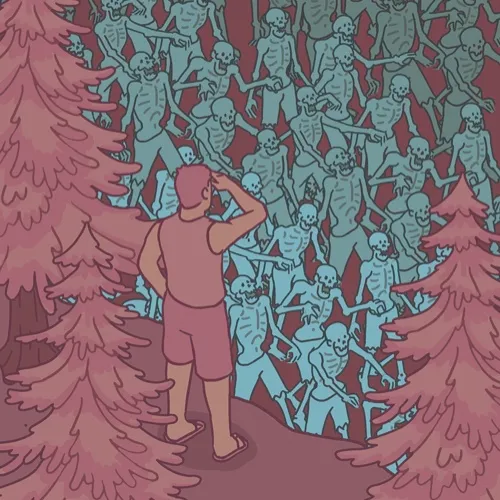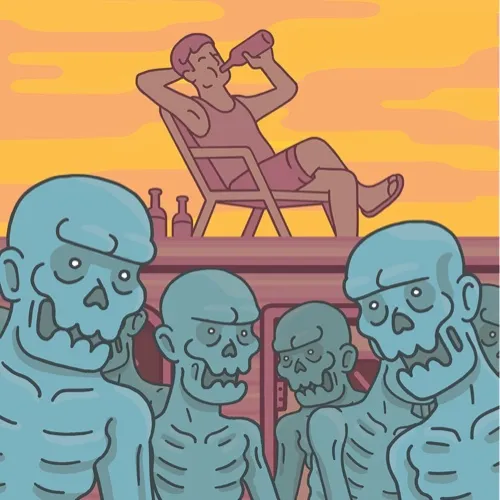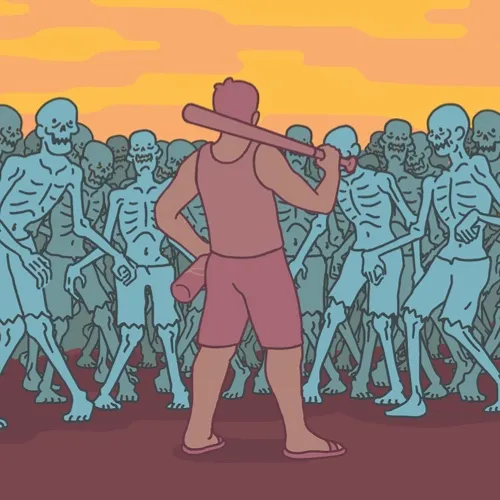1. Head for the hills

The spread of zombie disease can be modelled using epidemiological simulations. A 2015 study at Cornell University found that cities would be almost completely infected within a week but remote mountains would be untouched after four months. The reproduction ratio (R0) is the average number of new infections that each zombie creates. If R0 is between zero and one, the epidemic will eventually die out.
2. Lay low

If the zombies need to eat brains to survive, humanity may be able to simply wait out the crisis. A human brain only contains a maximum of around 2,000 calories, so even the slow and shambling kind of zombie will need to feed every few days just to maintain its metabolism. And any humans that are eaten can’t rise to become new zombies, so the disease would also spread more slowly.
3. Fight back

Conversely, a 2009 study at the University of Ottawa predicted that even if a cure for the virus is found, zombies will eventually overwhelm the population by infecting us faster than we can be treated. Of the possible scenarios, the only one with a happy ending gave us just 10 days to destroy all the zombies, with a series of increasingly devastating counter-attacks.
Subscribe to BBC Focus magazine for fascinating new Q&As every month and follow @sciencefocusQA on Twitter for your daily dose of fun science facts.